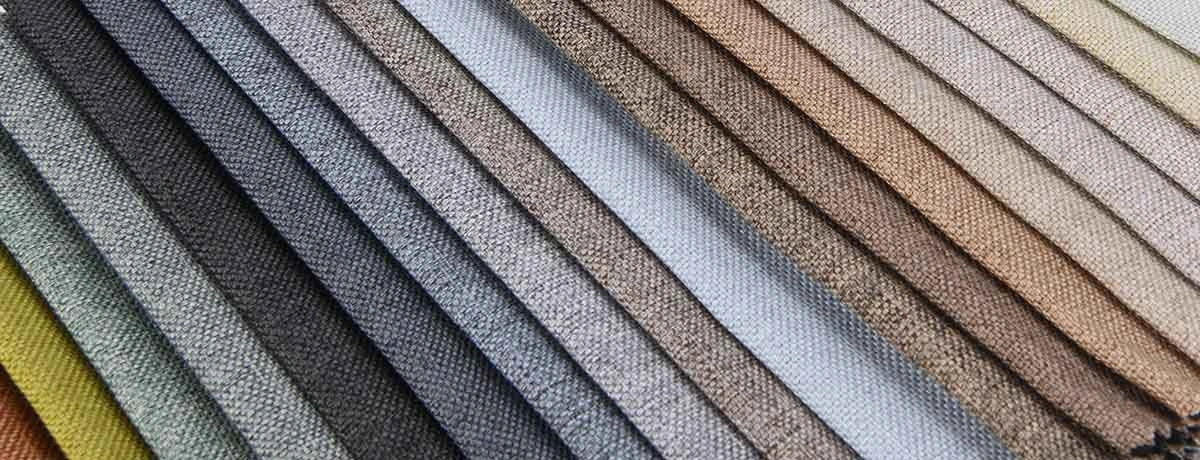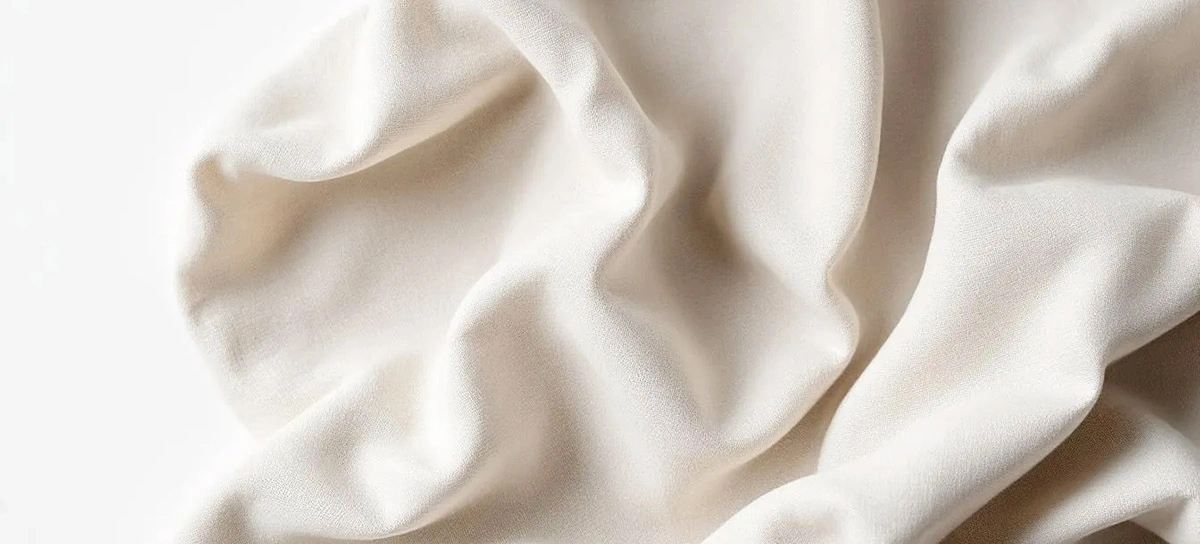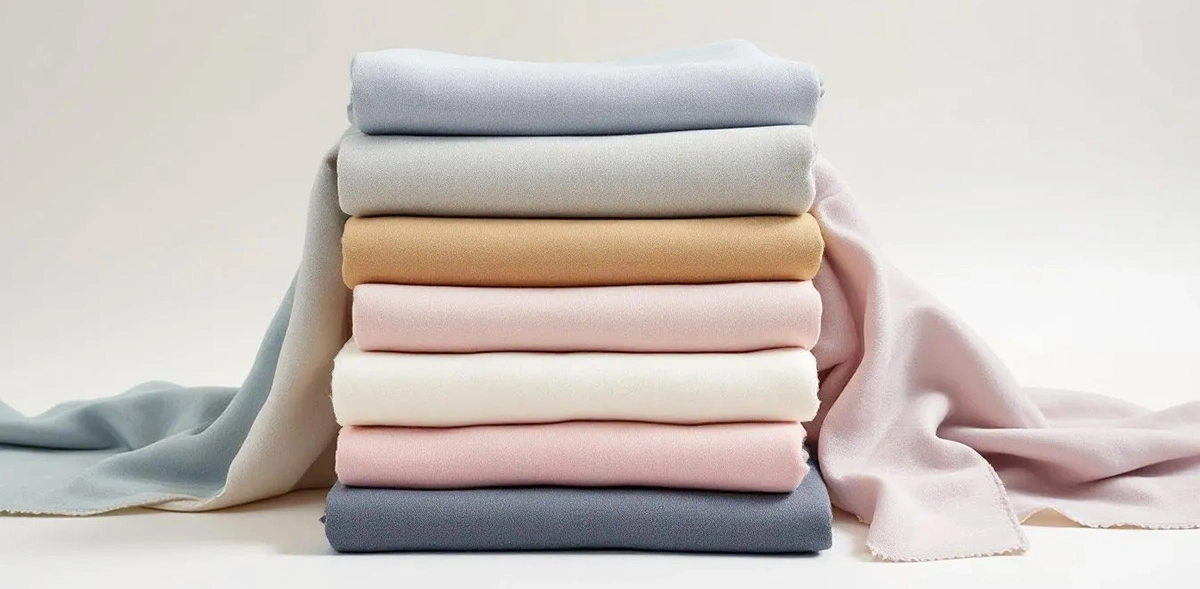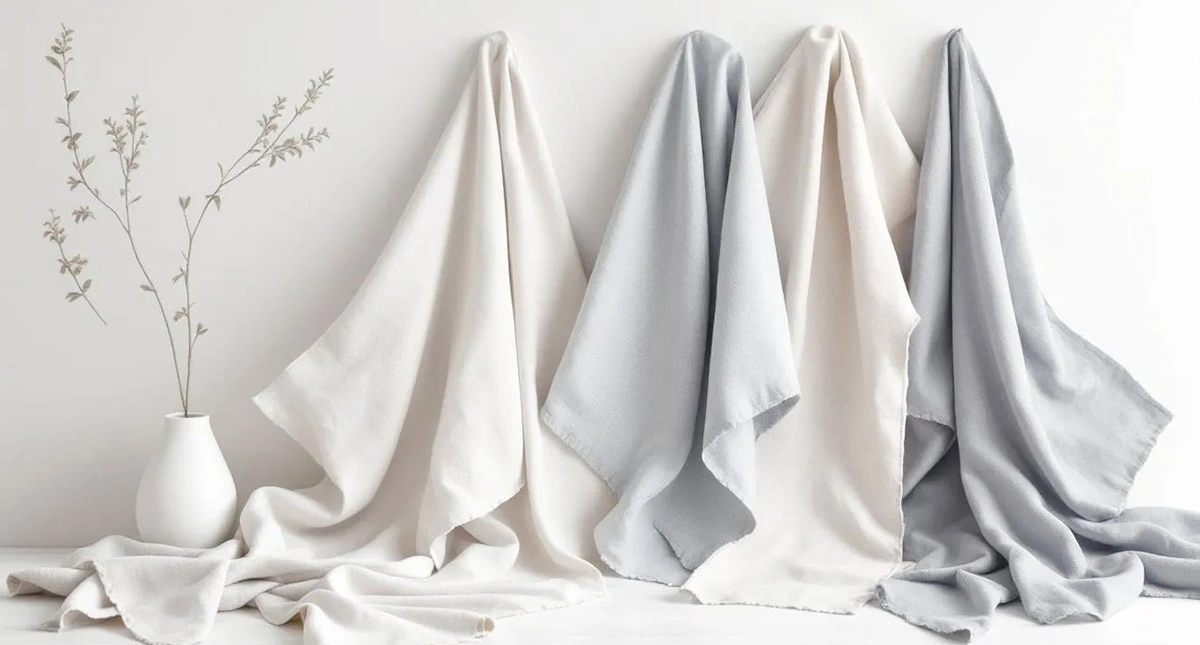Top Trends in Linen Fabrics: Your Ultimate Guide to Natural Style

- What makes linen fabric different from other natural fibers like cotton and wool?
- How should I care for my linen products to ensure they last?
- What are the environmental benefits of linen production?
- Why is there a price difference between handwoven and machine-woven linen?
- What certifications should I look for when purchasing sustainable linen fabrics?
Linen fabrics, made from the flax plant, offer durability and breathability. This article covers everything about linen: its origins, types, and uses in clothing and home decor. Discover why linen is a practical, sustainable choice.
Key Takeaways
-
Linen fabric, made from flax fibers, has a rich history and is valued for its durability, breathability, and unique texture, making it ideal for various applications.
-
The production of linen involves meticulous processes including cultivation, harvesting, retting, spinning, and weaving, each contributing to the fabric’s quality and suitability for diverse uses.
-
Linen’s sustainability is highlighted by its low water requirements, biodegradability, and lack of harmful residues, along with various certifications ensuring ethical practices.
Understanding Linen Fabric

Linen fabric, derived from the flax plant, is one of the oldest textiles known to humanity, with a history spanning over 30,000 years. This ancient fabric has been cherished by civilizations from Ancient Egypt to modern times for its unparalleled qualities. The flax plant’s long fibers, extracted from the stalks, are what give linen its unique structure, contributing to its breathability and comfort, especially in warm climates.
Unlike other natural fibers such as cotton and wool, linen fibers have a distinct texture and sheen that set them apart. The process of transforming flax into linen involves several stages that enhance its durability and softness. As a result, linen products, ranging from bed sheets to clothing, are not only luxurious but also practical, making them a favorite in households and wardrobes around the world.
The Journey from Flax to Fabric
The transformation of flax into the elegant linen fabric involves several meticulous stages, each contributing to the final product’s quality and texture. This journey includes:
-
Cultivation of the flax plant, which thrives under specific conditions to ensure optimal fiber quality
-
Planting and growth
-
Harvesting
-
Retting Every step plays a crucial role in producing the finest linen fibers.
Once the flax fibers are ready, they undergo spinning and weaving processes that turn them into the beautiful fabric we know and love. These stages not only define the fabric’s texture and appearance but also determine its suitability for various applications, from clothing to home decor. Understanding these processes will give you a deeper appreciation for the craftsmanship behind linen products.
Planting and Growth
The journey of linen fabric begins with the planting of flax seeds under specific conditions to ensure optimal growth. Flax is typically ready for harvest about 90-100 days after planting, following a full bloom of delicate blue flowers. This short growth cycle makes flax an efficient crop, allowing for multiple harvests within a year and contributing to sustainable flax production.
Flax plants thrive in well-drained soil and require minimal irrigation, showcasing their adaptability and resilience. This natural and green process not only supports the environment but also ensures that the flax fibers are of the highest quality. The careful cultivation of flax fiber is the first step in producing the superior linen fabric that has been cherished for millennia.
Harvesting and Retting
When the flax stalks begin to change color, indicating maturity, it’s time for harvest. This can be done either by hand or mechanically, depending on the scale of flax production. Once harvested, the next critical step is retting, a process that uses bacteria and water to separate the flax fibers from the rest of the plant material.
Retting can be done by soaking the harvested flax in water or by spreading it on grass to absorb dew, a method known as dew retting. Dew retting typically takes around three weeks, allowing the flax stalks to decompose naturally and release the valuable fibers.
This stage is crucial for ensuring the quality and flexibility of the linen fibers, setting the foundation for the subsequent manufacture, spinning and weaving processes.
Spinning and Weaving
Once the retting process is complete, the flax fibers are ready to be spun into yarn. This involves using a spindle or spinning wheel to transform the long flax fibers into a cohesive yarn suitable for weaving. The spinning process binds the fibers together, creating a strong and durable yarn that will be used to craft linen fabric.
The final stage of linen production is weaving, where the spun yarn is interlaced to form fabric. Various weaving techniques can be employed, such as:
-
Plain weave
-
Twill
-
Damask Each results in a different texture and appearance. This versatility in weaving allows for a wide range of linen products, from lightweight summer dresses to sturdy tablecloths, showcasing the adaptability and beauty of linen fabric.
Types of Linen Fabrics

Linen fabrics can be categorized based on weaving techniques, which influence their texture, appearance, and suitability for various applications. From luxurious damask linen to durable plain-woven linen, each type has unique characteristics that make it ideal for specific uses. Understanding these differences can help you choose the right linen fabric for your needs.
There are four primary types of linen fabric:
-
Damask
-
Plain-woven
-
Loosely-woven
-
Sheeting linen
Each type is crafted using different weaving techniques, resulting in distinct properties and applications. From elegant home decor to practical household items, these types of linen fabric offer versatility and functionality.
Damask Linen
Damask linen is renowned for its luxurious appearance, featuring intricate, reversible patterns created on a jacquard loom. This type of linen fabric is often chosen for decorative applications, adding an element of sophistication to home decor items such as tablecloths, napkins, and pillowcases. Its elegant designs make it a favorite for formal dining settings and special occasions.
Beyond its visual appeal, damask linen is also highly durable and can withstand frequent use and washing. This combination of beauty and practicality makes it a valuable addition to any household, enhancing the aesthetic of living spaces while providing lasting functionality.
Plain-Woven Linen
Plain-woven linen is known for its strength and durability, making it a preferred choice for everyday items such as dish towels and hand towels. This type of linen fabric balances sturdiness and softness, ensuring that it can handle regular use while remaining gentle on the skin.
The durability of plain-woven linen also extends to other household items like reusable napkins and tablecloths, offering a sustainable alternative to disposable products. Its practical applications and long-lasting quality make plain-woven linen a staple in many homes, providing both functionality and eco-friendliness.
Loosely-Woven Linen
Loosely-woven linen is characterized by:
-
High absorbency, making it suitable for products like reusable diapers and bath towels
-
Softness and absorbency, providing comfort and practicality in various applications
-
Breathable nature, ideal for lightweight clothing and summer garments
The texture of loosely-woven linen allows for excellent moisture-wicking properties, ensuring that items like bath towels dry quickly and remain fresh. This combination of absorbency and quick-drying capabilities makes loosely-woven linen a versatile and practical choice for everyday use.
Sheeting Linen
Sheeting linen is known for its soft surface, which provides comfort against the skin, making it ideal for bed sheets and pillowcases. The close weave of sheeting linen ensures durability while maintaining breathability, offering a perfect balance of comfort and longevity in bedding that is softer than many alternatives.
These qualities allow sheeting linen to drape well, making it a popular choice for various apparel designs, from shirts and dresses to suits and skirts. Its soft texture and stylish appearance have made sheeting linen a favorite among designers and consumers alike, providing both aesthetic appeal and practical wearability.
Benefits of Linen Fabrics
Linen fabric is praised for its unique qualities and versatility, making it suitable for various applications. One of its most significant benefits is durability; linen items soften with each wash, extending their lifespan and reducing textile waste. This long-lasting nature makes linen a wise investment for both homewares and clothing.
Linen is naturally hypoallergenic, making it an excellent choice for those with allergies or sensitive skin. Its breathability and moisture-wicking abilities contribute to a comfortable night’s sleep, particularly when used in bed sheets and pillowcases.
Additionally, linen has high moisture-wicking properties, allowing it to dry quickly, which is especially beneficial for items like wet bath towels and clothing.
Caring for Your Linen Fabrics
Proper care is essential to maintain the quality and longevity of washed linen fabric. To preserve linen:
-
Wash it in cold or lukewarm water using a gentle cycle and mild detergent.
-
Avoid using hot water as it can cause shrinkage.
-
Steer clear of bleach or detergents with whitening agents, as they can damage linen fibers.
When drying linen, consider the following care tips:
-
Tumble dry on low heat to prevent fiber damage and shrinkage.
-
Opt for air drying by laying the fabric flat to avoid stretching.
-
Iron linen while it is slightly damp on medium heat for the best results.
-
Prefer spot cleaning over frequent washing to maintain the fabric’s integrity and ensure it lasts for years to come.
Popular Uses of Linen Fabrics

Linen fabrics are highly versatile and are used in various common applications. From home decor to clothing and accessories, linen’s natural elegance and practicality make it a popular choice. Its uses are as diverse as the fabric itself, showcasing its adaptability and timeless appeal.
Linen’s popularity spans various domains, and it is particularly favored in home decor, clothing, and accessories. Each of these applications highlights the fabric’s unique qualities, enhancing the aesthetics and functionality of everyday items.
Home Decor
Linen is celebrated for its durability and ease of maintenance, making it a popular choice for home decor. Sheeting linen, for example, is lightweight and wide, primarily used for making bed sheets that provide a soft touch for a comfortable sleep. Linen tablecloths and napkins add an element of refinement to dining experiences, thanks to their absorbency and elegant appearance.
Damask linen, with its intricate designs, is ideal for decorative applications, enhancing the overall aesthetic of living spaces. Whether used for cushion covers, curtains, or table linens, linen fabric brings a timeless and sophisticated look to home interiors, creating a warm and inviting atmosphere.
Clothing
Linen is highly favored in clothing for its breathability and comfort, making it ideal for warm weather garments. Sheeting linen, with its smooth texture and tightly knit structure, is particularly popular for shirts, dresses, and suits, providing a refined appearance and comfortable wear.
The natural texture of linen adds sophistication to everyday wear, making it suitable for both casual and formal outfits. Linen shirts and dresses are not only stylish but also practical, offering a blend of comfort and elegance that is hard to match with other fabrics.
Accessories
Linen’s lightweight nature and stylish appeal make it a popular choice for accessories like bags and totes. Linen handbags and tote bags are perfect for summer outings, offering both functionality and fashion. Light linen footwear, such as espadrilles, is also popular for its comfort and suitability for warm weather.
Overall, linen accessories enhance summer wardrobes with their stylish and breathable qualities. Whether you’re looking for a trendy bag or comfortable footwear, linen offers a natural and elegant solution that complements any outfit.
Environmental Impact of Linen Production
Linen fabric showcases its sustainability through several environmental benefits:
-
Thrives in various climates without heavy reliance on irrigation or pesticides
-
Requires significantly less water compared to cotton, making it more environmentally friendly
-
Is biodegradable, breaking down without leaving harmful residues, thus reducing its environmental footprint
Linen fabrics do not release microplastics during washing, unlike many synthetic alternatives, contributing to less environmental pollution. Various certifications, such as the Global Organic Textile Standard (GOTS) and Bluesign, further ensure that linen production follows stringent environmental and social criteria, promoting sustainability and ethical practices in natural fabrics.
Linen Fabric Pricing
The price of linen fabric can vary widely based on several factors, including:
-
Quality: Higher quality linen is more durable and comfortable, tends to be more expensive, but provides better long-term investment value.
-
Type of product
-
Brand
-
Retailer
Handwoven linen, which requires more labor and craftsmanship, is typically priced higher than machine-woven varieties.
Purchasing linen in larger quantities can often lead to discounted prices, making it more affordable for consumers who are looking to buy in bulk. Understanding these pricing factors can help you make informed decisions when investing in linen products, ensuring you get the best value for your money.
Certifications for Sustainable Linen Fabrics
Certifications play a crucial role in assuring consumers of the sustainability and safety of linen fabric. The OEKO-TEX certification ensures that linen products are tested for harmful substances, guaranteeing safety for human health. Additionally, the European Flax™ certification emphasizes traceability and environmentally friendly practices in flax cultivation, ensuring high-quality and sustainable linen.
Other notable certifications include the Global Organic Textile Standard (GOTS), which verifies that a minimum of 70% of the fibers in linen products are organic and adhere to stringent environmental criteria, and the Bluesign certification, which focuses on resource efficiency and safety for both the environment and workers.
These certifications provide consumers with confidence in the ethical and sustainable qualities of the linen fabric they purchase.
Summary
Linen fabric stands out for its rich history, unique qualities, and versatility. From its origins in the flax plant to the intricate processes involved in its production, linen has maintained its relevance and appeal through the ages. Different types of linen fabric, such as damask, plain-woven, loosely-woven, and sheeting linen, offer a range of applications from home decor to clothing and accessories.
The benefits of linen, including its durability, hypoallergenic properties, and environmental sustainability, make it a preferred choice for many. Proper care can extend the life of linen products, ensuring they remain beautiful and functional for years. By understanding the environmental impact and certifications of sustainable linen, consumers can make informed decisions that support both quality and sustainability. Embrace the natural elegance of linen and enjoy its timeless style and practical benefits.
Frequently Asked Questions
What makes linen fabric different from other natural fibers like cotton and wool?
Linen fabric is distinguished from other natural fibers like cotton and wool by its unique structure, which offers exceptional breathability and durability, as it is made from the stalks of the flax plant. This results in a distinct texture and sheen that set linen apart.
How should I care for my linen products to ensure they last?
To ensure your linen products last, wash them in cold or lukewarm water on a gentle cycle with mild detergent, and avoid hot water, bleach, and high heat drying. Ironing while slightly damp will also help maintain their quality.
What are the environmental benefits of linen production?
Linen production offers significant environmental benefits as it utilizes less water, requires minimal pesticides, and is fully biodegradable, reducing its overall impact on ecosystems. Furthermore, linen fabrics do not release microplastics during washing, making them a more sustainable textile choice.
Why is there a price difference between handwoven and machine-woven linen?
The price difference between handwoven and machine-woven linen arises from the greater labor and craftsmanship involved in handweaving, which results in higher costs. Consequently, handwoven linen often offers superior quality and durability, making it a worthwhile long-term investment.
What certifications should I look for when purchasing sustainable linen fabrics?
When purchasing sustainable linen fabrics, it is essential to look for certifications like OEKO-TEX, European Flax™, GOTS, and Bluesign, as these indicate that the linen is produced sustainably and free from harmful chemicals. These certifications provide assurance of quality and environmental responsibility.
